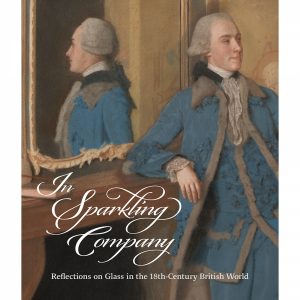 This book from Christopher L. Maxwell (Curator of European Glass CMOG) and other authors explores various aspects of Glass in 18th C. Britain. Currently available via the Corning shop, it will hopefully also be available via other channels soon. An exhibition is also planned for 2021 based on the themes explored in the book.
This book from Christopher L. Maxwell (Curator of European Glass CMOG) and other authors explores various aspects of Glass in 18th C. Britain. Currently available via the Corning shop, it will hopefully also be available via other channels soon. An exhibition is also planned for 2021 based on the themes explored in the book.In Sparkling Company: A New Book Brings New Perspectives on Glass
The Corning Museum of Glass has a mission to “inspire people to see glass in a new light.” This is definitely what I needed when, in 2016, I arrived from London as the Museum’s new Curator of European Glass. Typical of most historians and curators of decorative arts and material culture, I had little previous experience of glass and, as I stood in the galleries, looking at the serried ranks of English drinking vessels, I confess I struggled to summon enthusiasm. With the exception of some brightly enameled pieces, it seemed these vessels were intended, by their very clarity and understated design, to be inconspicuous. However, I knew this was an important period in glassmaking; the 18th century was a golden age for the perfection and production of British lead glass or “crystal” (an innovation introduced in the late 1670s that used lead oxide to create a particularly bright and clear glass, with a notable heft). From histories of dining and drinking, I also knew that the contents many of these vessels were intended to hold were not available to everyone. The types of glass most frequently found in museums would have been present only in the wealthiest of households, alongside expensive and desirable materials like silver, porcelain, lacquer, and mahogany. What place then, did glass hold within the rich material culture of the British elite during this period?
read more:
In Sparkling Company: A New Book Brings New Perspectives on Glass
In Sparkling Company press:
https://www.cmog.org/collection/exhibitions/sparkling
https://www.architecturaldigest.com/story/the-corning-museum-of-glass-is-using-vr-to-recreate-a-historic-drawing-room
No Comments, Comment or Ping
Reply to “New publication from The Corning Museum of Glass”